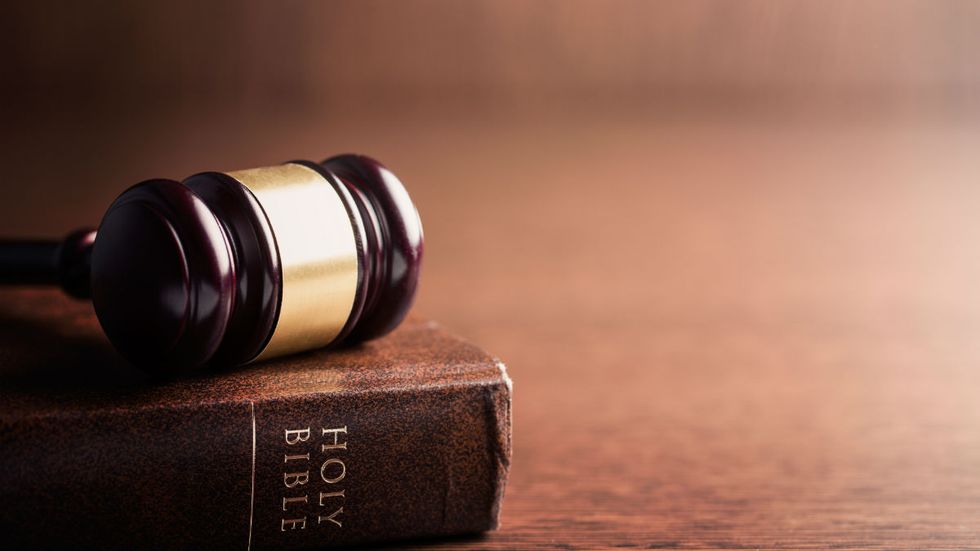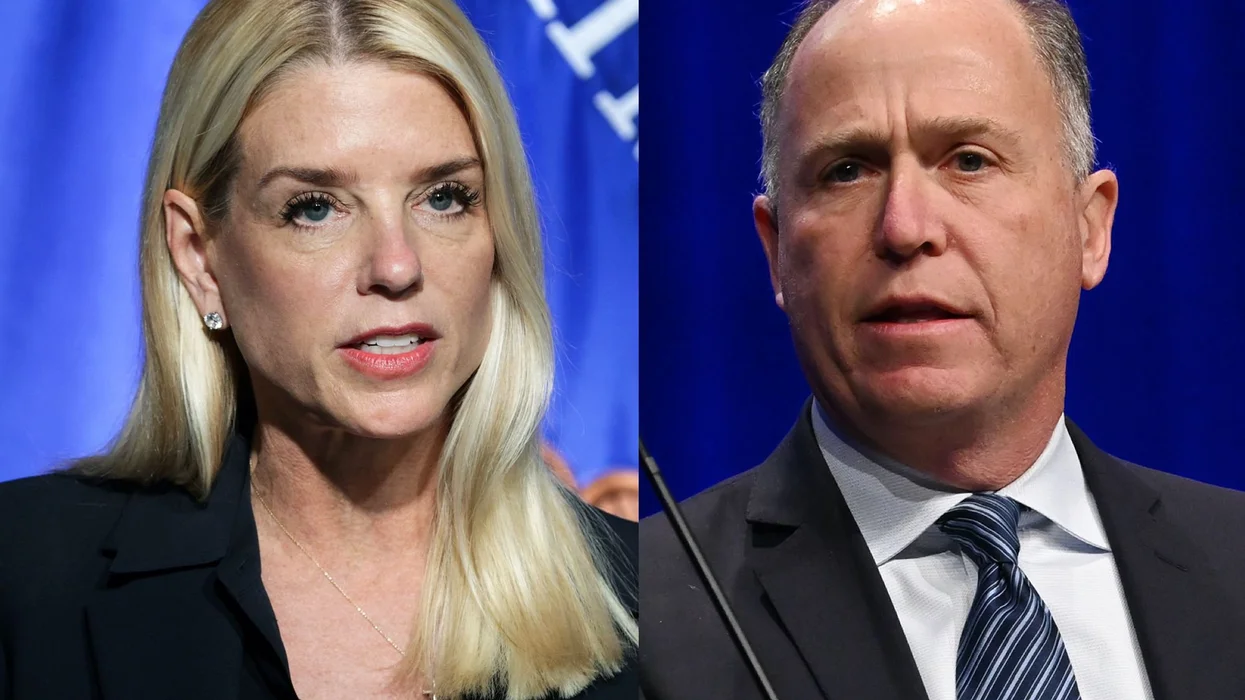
© 2025 Blaze Media LLC. All rights reserved.
In recent years, one of the most contentious provisions of the Bill of Rights has become the very first freedom on the list. Formerly a point of wide, bipartisan consensus, religious liberty has been muddled and misrepresented in recent years to the point where one Obama administration official has gone so far as to call it a “code word” for “discrimination, intolerance, racism, sexism, homophobia, Islamophobia, Christian supremacy or any form of intolerance.”
Sadly, this has become the bulk of the discussion around America’s first freedom. Now claims to protection under the First Amendment are usually either written off as absurd or decried as some sort of preferential treatment. And in an America where religion is at least becoming less organized (if not less prevalent altogether), religious freedom claims are probably only going to seem to many like some sort of special pleading, if not outright confusing.
Indeed, some of the claims may sound a bit outlandish at face value. For example:
- Currently, in a case out of Utah, Mormon fundamentalists are using a religious liberty defense in a food stamp fraud case, based on a belief of consecrating property to the church.
- Elsewhere in the Beehive State, the star of the popular reality show “Sister Wives” is taking his polygamy case to the U.S. Supreme Court over his Mormon beliefs.
- In Indiana, a Burmese Christian refugee’s lawyers are claiming that her actions of beating her son with a coat hanger is protected by a biblical passage regarding corporal punishment.
- And a few months ago, a Santeria priestess was told by a Virginia court that she maintains the right to sacrifice chickens, but that she had to take classes to learn to do so humanely.
- Even accused mass-murderer Dylann Roof’s attorneys are trying to skate the death penalty for their client by arguing that it would violate potential jurors’ religious liberty.
While such religious claims may seem ridiculous to some (or all, in the case of Roof’s defense), we nonetheless live in a society where laws and policies are going to clash with the tenets of some people’s faiths and the competing demands of individual conscience have to be reconciled.
The First Amendment to the United States Constitution protects both the free exercise of religion on behalf of persons and prohibits the federal government from establishing a state religion. As with almost all other provisions in the Bill of Rights, in specific cases, these provisions have been interpreted to mean different things. Ergo, lawmakers, prosecutors, attorneys, and justices still have to sort through the varied and contrasting claims and make determinations.
So how do these determinations work, exactly? While the religious liberty of every American is upheld by the First Amendment, specific claims like these typically fall under either First Amendment case law or specific legislation that deals with religious liberty.
The Sherbert Test
While the history of First Amendment jurisprudence goes back to the days of the early republic, it’s probably most helpful — and brief — to begin this discussion in the 20th century.
Between 1963 and 1990, religious freedom claims were handled by something called the “Sherbert Test.” The test was the result of the 1963 ruling in Sherbert v. Verner, a case that found that the state of South Carolina’s denial of unemployment compensation violated the religious liberty of a Seventh-day Adventist who was fired for observing the Sabbath on Saturday instead of Sunday.
Now, the debate about religious freedom has permeated our public discourse in a lot of negative ways. Years of smear campaigns by leftist organizations, politicians, and news outlets have done their best to cast America’s first freedom as something that only applies to the certain religious groups and individuald.
In regard to federal laws and programs, most such complaints now fall under the purview of the Religious Freedom Restoration Act, which imposes a three-part balancing test between the government and the religious person in question.
The test worked as such:
- The law has to satisfy a compelling interest.
- It has to be narrowly tailored to achieve its goal, meaning that it can’t do too much in order to satisfy that compelling interest.
- It also has to be the least restrictive means of achieving that interest, meaning that the law cannot stand if there is an easier way to satisfy the interest.
So, in each of these cases, first the religious appellant has to demonstrate that, through law or policy, the government has placed a substantial burden on a sincere religious practice of theirs.
This is probably the most contentious test, as it runs into areas where it requires the state act as a theological arbiter — and if the government can decide the legitimacy of your beliefs, there’s not a lot else that it can’t do.
But assuming that the appellant meets the undue burden/sincere belief requirement, the government then has to prove that it is burdening the sincere religious belief because of a compelling interest. Then the government has to prove that it is using the least restrictive means of doing so. This principle is known as strict scrutiny and Sherbert used it to balance the competing claims of persons and the government.
Sherbert is struck down, RFRA fills the void
This was the standard for years until in the 1990 case of Employment Division v. Smith, in which the court ruled that the test didn’t apply to “neutral, generally applicable” laws and that “the [free exercise] clause does not relieve an individual of the obligation to comply with a law that incidentally forbids (or requires) the performance of an act that his religious belief requires (or forbids) if the law is not specifically directed to religious practice and is otherwise constitutional … “
In this specific case, the ruling meant that two Native Americans working at a private drug rehab center could be fired for consuming peyote as part of a religious ceremony, on the grounds of work-related misconduct. More broadly, the ruling left religious expression in everyday life largely without protection or grounds for legal recourse.
Hence RFRA, passed in 1993, supported on both sides of the aisle, and signed by a Democrat president, became law and placed the provisions of the Sherbert Test into the federal code.
Full text of RFRA (per Cornell Law School):
(a) In general
Government shall not substantially burden a person’s exercise of religion even if the burden results from a rule of general applicability, except as provided in subsection (b) of this section.
(b)Exception: Government may substantially burden a person’s exercise of religion only if it demonstrates that application of the burden to the person—
(1) is in furtherance of a compelling governmental interest; and
(2) is the least restrictive means of furthering that compelling governmental interest.
(c) Judicial relief
A person whose religious exercise has been burdened in violation of this section may assert that violation as a claim or defense in a judicial proceeding and obtain appropriate relief against a government. Standing to assert a claim or defense under this section shall be governed by the general rules of standing under article III of the Constitution.
This stood for a few years at the state and federal level until another case, City of Boerne v. Flores ruled in 1997 that the federal law could only apply to federal interest. This prompted several states to start passing state-level RFRAs (or analogous legislation by other names) in order to afford religious persons the same protections at the state level.
Twenty-one states currently have such legislation on the books, according to numbers from the National Conference of State Legislatures published earlier this year.
New challenges and the discrimination myth
So, what’s the big deal? Looking at just the recent history of religious freedom laws in the United States, the idea that any of these provisions would be controversial seems a little baffling. Nonetheless, the times have changed, and now that religious beliefs run up against the government’s new definition of marriage, religious freedom has suddenly become one of the Left’s greatest enemies
The principles of religious freedom, the importance of the human conscience in seeking the truth, and the teachings of most major world religions haven’t changed in the past 23 years. The only things that have are the ever-evolving political demands of the social Left and the kind of religious people that are seeking protections.
Many on the Left have tried to explain this discrepancy away, including The Huffington Post’s Carol Kuruvilla, who makes the case that somewhere along the line, RFRA provisions stopped being a “shield” for minority faiths when Christians conservatives figured out that it could be used as a “sword against minorities.” But the provisions haven’t changed; what’s changed are the kinds of laws that are being passed and therefore placing undue burdens on people’s conscience.
In this paradigm, the First Amendment isn’t a shield or a sword; it’s merely a stumbling block that a secularist government has to get around in order to impose unconscionable political ends on religious dissidents.
Some argued, as they have in the wake of the Hobby Lobby and the Sisters of the Poor cases, that religious persons/employers are simply using their faith to discriminate against women when they won’t cover contraception on their health care plans. But one has to ask what claim these women would have otherwise to force that burden on their employers. They voluntarily took a job, knowing the terms of their benefits package, but somehow believe that they have a right to violate the conscience of the person supplying it.
Another typical complaint is that protections for businesses against materially cooperating with same-sex weddings is somehow “legal discrimination.” But, again, one has to wonder what claim the appellants have in order to dictate that someone violate their conscience with their respective property to avoid hurting someone’s feelings. But I digress.
Conclusion
Ergo, in looking at the various cases from Hobby Lobby to the Santeria priestess in Fairfax, Va., usually, claims of religious freedom will typically fall under the three-part balancing test. Despite all the lies and misrepresentation, there’s nothing about picking and choosing laws, or “legalized discrimination” whatsoever.
Religious liberty is simple, intrinsic to our history, and essential to who we are as Americans and free human beings.
Want to leave a tip?
We answer to you. Help keep our content free of advertisers and big tech censorship by leaving a tip today.
Want to join the conversation?
Already a subscriber?
more stories
Sign up for the Blaze newsletter
By signing up, you agree to our Privacy Policy and Terms of Use, and agree to receive content that may sometimes include advertisements. You may opt out at any time.
Related Content
© 2025 Blaze Media LLC. All rights reserved.
Get the stories that matter most delivered directly to your inbox.
By signing up, you agree to our Privacy Policy and Terms of Use, and agree to receive content that may sometimes include advertisements. You may opt out at any time.






